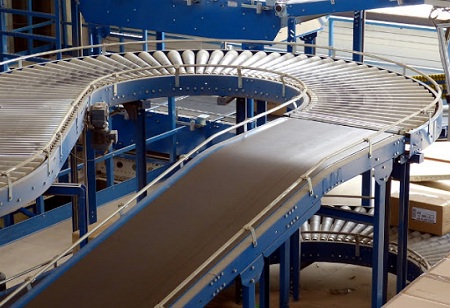According to Global Market Insights, the
Conveyor Belt Market size is estimated to exhibit a CAGR of more than 5.8 percent growth till 2026. One of the significant factors contributing to the industry’s growth is the increasing demand from the power generation, mining, and manufacturing industries. As this product reduces material handling problems and can be easily transferred to the desired location without any loss of material, its demand has been increasing subsequently in recent years. Also, the demand for conveyor belts in most industrial scenarios has surged dramatically due to the increasing industrialization and urbanization in developing economies, especially India.
Major Drivers for the market’s growth bandwagon
In the coming years, the growth in GDP and factors such as developments of commercial places will be the predominant parameters that will potentially raise the demand for conveyor belts. Furthermore, rising demand for handling larger volumes of goods has been the major driver for the conveyor belt manufacturing market. While bringing the various industries closer to the zero-defect target, automation in manufacturing, baggage handling, food and beverage, mining, among others has also been the major driver.
Indispensable use of polymer materials
“Polymer industries are continuously replacing metals, glass, paper, and other traditional materials in various applications due to their lightweight, strength, and design flexibility, along with the cost effectiveness,” stated Alpesh Gandhi, MD at Ami Polymer.
Hence, it is the same with the polymer-based conveyor belts and is the most widely used conveyor belts in the general manufacturing industry. The overall product demand will escalate across all end-users with the increasing demand for construction materials led by infrastructural development. Also, owing to their excellent flexibility and tensile strength, polymer conveyor belts are widely accepted; thus making it ideal for transporting materials, as it is lightweight and also within a facility or manufacturing plant.
While polymer-based belts dominate many industries due to their flexibility and cost efficiency, stainless steel metal conveyor belts are essential in high-temperature, heavy-duty, or corrosive environments. Choosing a reputable
metal conveyor belt manufacturer is key to ensuring durability and precision for efficient production processes.
Challenges pertaining to Ensuring safety and reducing accidents
As conveyor systems have several moving parts, it is quite prone to several minor problems that might amplify into major issues which can ultimately lead to complete halting of work. Hence, there are higher chances of failure if the systems are made more complex thus causing breakdowns and ultimately impacting the life of the conveyor system.
Increasing usage of automated guided vehicles and robotics
Today, there has been a significant demand for automation across industrial facilities, which in turn has led to companies to look out for some sort of process optimization to stay relevant with the changing market dynamics. From meeting requirements related to material handling capacities, fewer chances of human error, to increased safety, high production volume, and increased accuracy and repeatability, numerous companies are adopting such technologies for material handling processes. Hence, due to this, large-scale adoption of industrial robots may impact the conveyor system market negatively.
